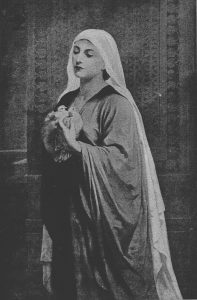Before Passover, we discussed the spiritual nature of biblical leprosy (‘Tzara’at’ {צרעת} in the original Hebrew). According to the Jewish tradition, this disease is a result of three specific sins:
‘Pride’ – As in the case of Naaman the commander of the army of the King of Syria (2 Kings 5:1-14).
‘Miserliness’ – As in the case of Gechazi, Elisha’s servant (2 Kings 5:15-27).
‘Evil gossiping’ – As in the case of Moses’ sister Miriam (Numbers 12:1-13).
According to a very interesting interpretation, in the Book of Leviticus, there is a sign for these three sins, hidden in the original Hebrew:
“When a person has on the skin of his body a swelling or an eruption or a spot, and it turns into a case of leprous disease on the skin of his body, then he shall be brought to Aaron the priest or to one of his sons the priests.” (Leviticus 13:2)

In the original Hebrew, the three signs are: ‘Se’et’ {שאת} (‘swelling’), ‘Sapachat’ {ספחת} (‘eruption’) and ‘Ba’heret’ {בהרת} (‘spot’).
‘Se’et’ {שאת} comes from the same Hebrew root for ‘Mitnase’ {מתנשא} meaning ‘arrogant’ (‘pride’).
‘Sapachat’ {ספחת} comes from the same Hebrew root as the verb Le-Sapeach’ {לספח} meaning ‘to annex’ as to use things of others and make it yours without their permission (‘miserliness’)
‘Ba’heret’ {בהרת} – comes from the Hebrew word ‘Ba’hir’ {בהיר} which means ‘bright or pale’ meaning what happens to a person’s face (turns pale) when another person slanders him (‘evil gossiping’).
